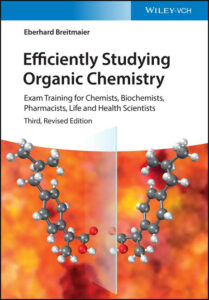Back to: Organic Chemistry 100 Level
Welcome to class!
Hello my superstar learner! I’m so proud of how far you’ve come. You’ve been consistent, curious, and committed—and now, it’s time to bring everything together. Today’s class is all about Revision and Case Studies, based on a Summary of Key Concepts we’ve covered so far in Organic Chemistry. Think of it like a final rehearsal before a big performance. We’ll go over all the important ideas, connect them with real-life examples, and make sure everything is crystal clear in your mind. Ready? Let’s do this—together!
Revision & Case Studies
Summary of Key Concepts in Organic Chemistry
Let’s revisit the most important topics we’ve explored so far. These are the building blocks that every confident Chemistry student must master:

1. Introduction to Organic Chemistry
Organic Chemistry is the study of compounds containing carbon. Carbon is special because it can form four bonds, link with other carbon atoms, and create long chains or rings. Organic compounds are everywhere—from the food we eat to the clothes we wear.
2. Classification and Nomenclature of Organic Compounds
We group organic compounds based on the functional groups they contain (e.g., alcohols, alkanes, ketones, etc.). We also use IUPAC naming rules to name them properly so that chemists all over the world can understand what compound we’re referring to.
3. Structure and Bonding in Organic Compounds
Carbon forms different types of bonds: single (sigma), double (pi), and triple bonds. The structure of molecules—how atoms are arranged—affects how the compound behaves. Bonding determines shape, strength, and reactivity.
4. Alkanes, Alkenes, Alkynes and Cycloalkanes
These are different types of hydrocarbons:
Alkanes – only single bonds, less reactive
Alkenes – at least one double bond, more reactive
Alkynes – at least one triple bond, highly reactive
Cycloalkanes – ring-shaped alkanes
5. Aromatic Compounds
Aromatic compounds like benzene have a special stable ring structure. They’re found in dyes, plastics, and even medicines.
6. Functional Groups I, II & III
These include:
Alcohols, Ethers, Halides
Aldehydes, Ketones
Carboxylic Acids, Esters
Each has unique properties and uses—from cleaning agents to perfumes and painkillers.
7. Organic Reaction Mechanisms
We learnt how organic reactions happen step-by-step through mechanisms like:
Substitution
Addition
Elimination
We also learnt about intermediates and electron movement using curved arrows.
8. Isomerism in Organic Chemistry
Isomers have the same molecular formula but different structures or arrangements. We learnt about:
Structural isomerism (chain, position, functional group)

Stereoisomerism (cis-trans, optical isomerism)
Case Studies and Real-Life Applications
Let’s make it even more relatable with a few real-world examples:
Ethanoic acid in vinegar gives food its sour taste and helps preserve it.
Ethanol in hand sanitisers kills germs—super useful during flu season!
Aspirin, a common painkiller, is an ester formed from salicylic acid.
Perfumes and air fresheners use esters for their sweet fragrances.
Plastics and rubbers are made from reactions involving alkenes.
Understanding these reactions helps chemists design better medicines, solve environmental problems, and even improve farming techniques.
Summary
- Organic Chemistry revolves around carbon-based compounds.
- Knowing the names, structures, and reactions of organic molecules is key.
- We use functional groups and bonding types to predict behaviours.
- Isomerism shows us that structure changes everything—even if formulas stay the same.
- These concepts are part of our daily lives, from our food to our medicine.
Evaluation
- What makes carbon so special in Organic Chemistry?
- Name one difference between alkanes and alkenes.
- Give one example of a real-life use of an ester.
- What is the difference between structural and stereoisomerism?
- Why is understanding organic reaction mechanisms important?
Bravo, champ! You’ve revised the full journey of Organic Chemistry like a true scholar. Everything you’ve learnt is preparing you to face bigger scientific ideas with confidence and excitement. Remember, learning is like a ladder—you’re climbing higher with each step. Keep shining, keep learning, and stay connected with Afrilearn, where we make education joyful, powerful, and truly African. See you at the top!
